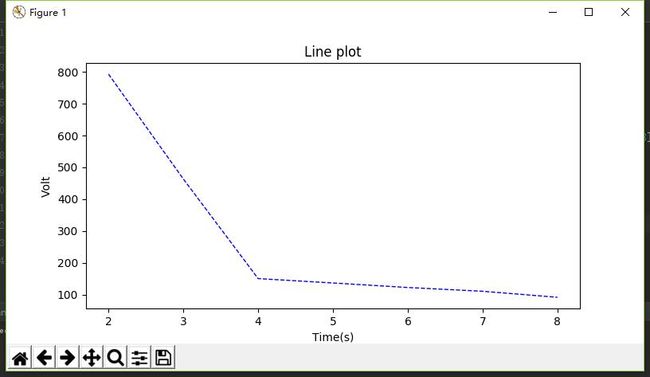Kmeans算法 python实现(改)
转载自机器学习算法与Python实践之(五)k均值聚类(k-means)
然后做了一些修改,想贴评论区交流来着,结果字数限制贴不开,很是尴尬……
然后当时自己是要算SSE的,又加上了找elbow point的图和代码
#!/usr/bin/python
# -*- coding: utf-8 -*-
from numpy import *
import matplotlib.pyplot as plt
'''
楼主我这有点自己不成熟的建议,不一定恰当
一个是欧式距离没必要开方吧,开方还会造成不必要的误差
还有一个是随机数没有去重操作,在样本点比较少且k比较小的情况下,很容易选重点而少分一类
另一个是
if clusterAssment[i, 0] != minIndex:
clusterChanged = True
clusterAssment[i, :] = minIndex, minDist**2
因为你的clusterAssment初始化为0,但是你minIndex索引也可能为0,也就是说如果你的
clusterAssment第一次被更新且minIndex为0时,这个分支是进不去的,这个对分簇可能没有影响,但是
如果最后要算SSE的话,累加clusterAssment[i, 1]就不是想要的结果,感觉其实也就是索引从1开始
并且及时更新clusterAssment[i, 1],功用上来说感觉好的多
'''
# 计算距离平方
def euclDistance(vector1, vector2):
return sum(power(vector2 - vector1, 2))
# 用随机样本初始化centroids
def initCentroids(dataSet, k):
numSamples, dim = dataSet.shape
centroids = zeros((k + 1, dim))
s = set()
for i in range(1, k + 1):
while True:
index = int(random.uniform(0, numSamples))
if index not in s:
s.add(index)
break
# index = int(random.uniform(0, 2))
print "random index:"
print index
centroids[i, :] = dataSet[index, :]
# centroids[0, :] = dataSet[0, :]
# centroids[1, :] = dataSet[2, :]
# centroids[1, :] = dataSet[0, :]
# centroids[2, :] = dataSet[2, :]
return centroids
# 获得cost
def getcost(clusterAssment):
len = clusterAssment.shape[0]
Sum = 0.0
for i in xrange(len):
Sum = Sum + clusterAssment[i, 1]
return Sum
# k-means主算法
def kmeans(dataSet, k):
numSamples = dataSet.shape[0]
# 第一列存这个样本点属于哪个簇
# 第二列存这个样本点和样本中心的误差
clusterAssment = mat(zeros((numSamples, 2)))
for i in xrange(numSamples):
clusterAssment[i, 0] = -1
clusterChanged = True
# step 1: 初始化centroids
centroids = initCentroids(dataSet, k)
# 如果收敛完毕,则clusterChanged为False
while clusterChanged:
clusterChanged = False
# 对于每个样本点
for i in xrange(numSamples):
minDist = 100000.0
minIndex = 0
# 对于每个样本中心
# step 2: 找到最近的样本中心
for j in range(1, k + 1):
distance = euclDistance(centroids[j, :], dataSet[i, :])
if distance < minDist:
minDist = distance
minIndex = j
# step 3: 更新样本点与中心点的分配关系
if clusterAssment[i, 0] != minIndex:
clusterChanged = True
clusterAssment[i, :] = minIndex, minDist
else:
clusterAssment[i, 1] = minDist
# step 4: 更新样本中心
print "clusterAssment before:"
print clusterAssment
for j in range(1, k + 1):
# 骚操作
pointsInCluster = dataSet[nonzero(clusterAssment[:, 0].A == j)[0]]
centroids[j, :] = mean(pointsInCluster, axis=0)
print 'Congratulations, cluster complete!'
return centroids, clusterAssment
# 以2D形式可视化数据
def showCluster(dataSet, k, centroids, clusterAssment):
numSamples, dim = dataSet.shape
if dim != 2:
print "Sorry! I can not draw because the dimension of your data is not 2!"
return 1
mark = ['or', 'ob', 'og', 'ok', '^r', '+r', 'sr', 'dr', ' len(mark):
print "Sorry! Your k is too large!"
return 1
# 绘制所有非中心样本点
for i in xrange(numSamples):
markIndex = int(clusterAssment[i, 0])
plt.plot(dataSet[i, 0], dataSet[i, 1], mark[markIndex - 1])
mark = ['Dr', 'Db', 'Dg', 'Dk', '^b', '+b', 'sb', 'db', ' testSet.txt
1.658985 4.285136
-3.453687 3.424321
4.838138 -1.151539
-5.379713 -3.362104
0.972564 2.924086
-3.567919 1.531611
0.450614 -3.302219
-3.487105 -1.724432
2.668759 1.594842
-3.156485 3.191137
3.165506 -3.999838
-2.786837 -3.099354
4.208187 2.984927
-2.123337 2.943366
0.704199 -0.479481
-0.392370 -3.963704
2.831667 1.574018
-0.790153 3.343144
2.943496 -3.357075
-3.195883 -2.283926
2.336445 2.875106
-1.786345 2.554248
2.190101 -1.906020
-3.403367 -2.778288
1.778124 3.880832
-1.688346 2.230267
2.592976 -2.054368
-4.007257 -3.207066
2.257734 3.387564
-2.679011 0.785119
0.939512 -4.023563
-3.674424 -2.261084
2.046259 2.735279
-3.189470 1.780269
4.372646 -0.822248
-2.579316 -3.497576
1.889034 5.190400
-0.798747 2.185588
2.836520 -2.658556
-3.837877 -3.253815
2.096701 3.886007
-2.709034 2.923887
3.367037 -3.184789
-2.121479 -4.232586
2.329546 3.179764
-3.284816 3.273099
3.091414 -3.815232
-3.762093 -2.432191
3.542056 2.778832
-1.736822 4.241041
2.127073 -2.983680
-4.323818 -3.938116
3.792121 5.135768
-4.786473 3.358547
2.624081 -3.260715
-4.009299 -2.978115
2.493525 1.963710
-2.513661 2.642162
1.864375 -3.176309
-3.171184 -3.572452
2.894220 2.489128
-2.562539 2.884438
3.491078 -3.947487
-2.565729 -2.012114
3.332948 3.983102
-1.616805 3.573188
2.280615 -2.559444
-2.651229 -3.103198
2.321395 3.154987
-1.685703 2.939697
3.031012 -3.620252
-4.599622 -2.185829
4.196223 1.126677
-2.133863 3.093686
4.668892 -2.562705
-2.793241 -2.149706
2.884105 3.043438
-2.967647 2.848696
4.479332 -1.764772
-4.905566 -2.911070结果:
# -*- coding: utf-8 -*-
import numpy as np
import matplotlib.pyplot as plt
#根据k和cost(SSE)绘图找elbow point确定较为恰当的k取值
#X轴,Y轴数据
x = [2, 3, 4, 5, 6, 7, 8]
#就简单取了个均值
y = [792.916856537, 463.649680922, 150.626049073, 136.860464646, 122.657971766, 110.792377091, 91.8706106158]
plt.figure(figsize=(8, 4)) #创建绘图对象
plt.plot(x, y, "b--", linewidth=1) #在当前绘图对象绘图(X轴,Y轴,蓝色虚线,线宽度)
plt.xlabel("Time(s)") #X轴标签
plt.ylabel("Volt") #Y轴标签
plt.title("Line plot") #图标题
plt.show() #显示图
绘图结果:
因此k = 4时应该是效果比较好的

